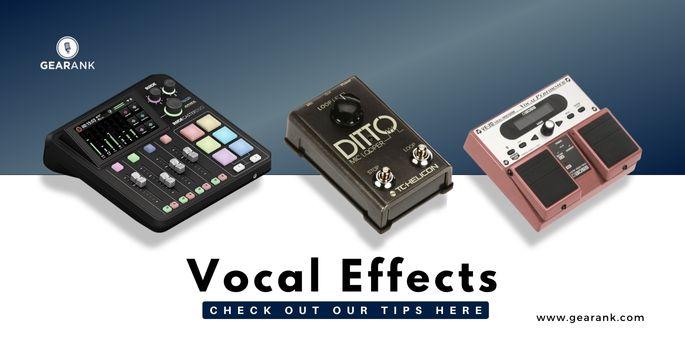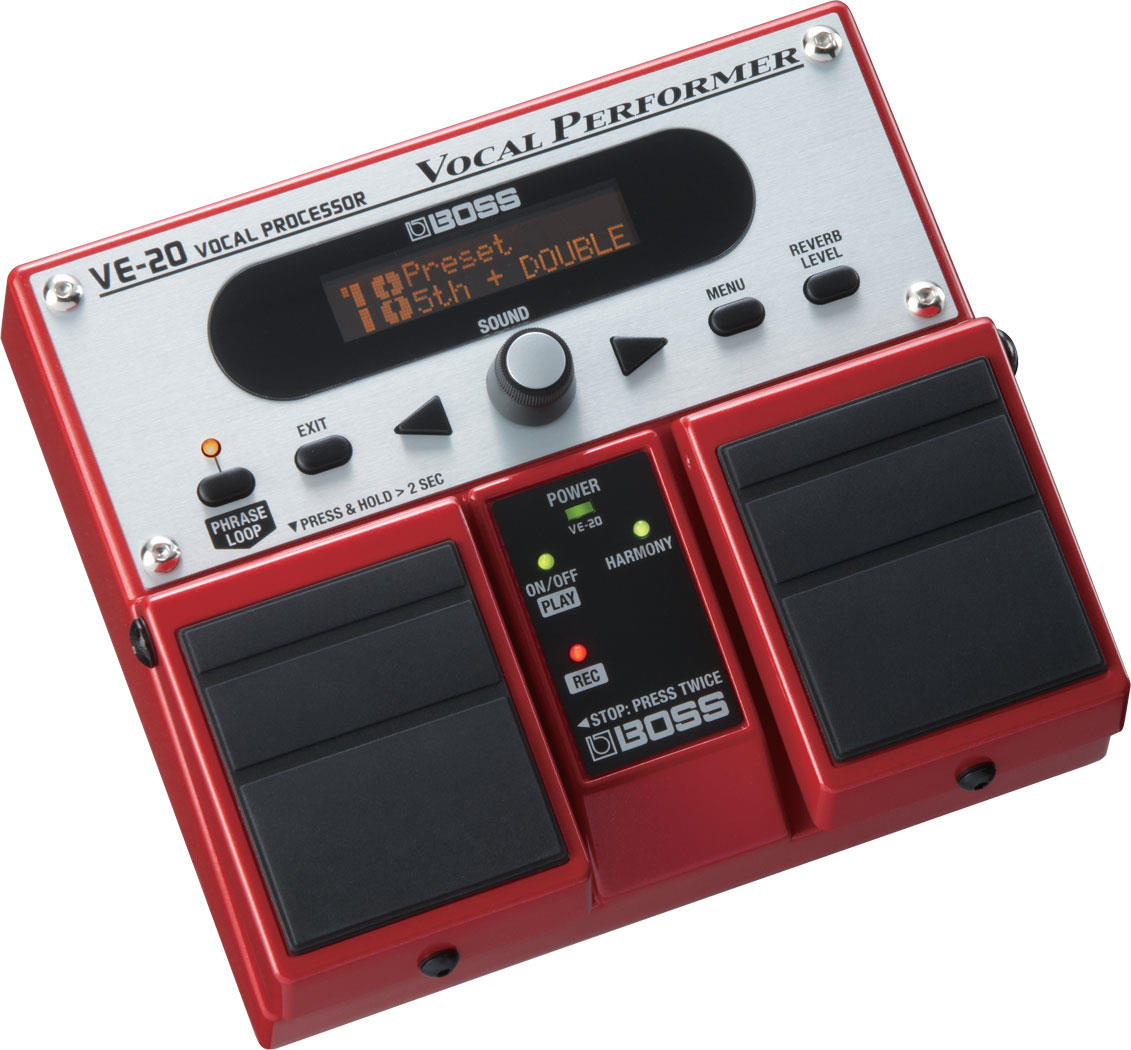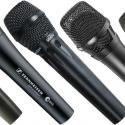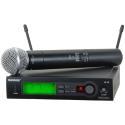Vocal Effects: What are all the Options to Consider? Read here.

Several common effects are typically employed in mixing vocals, such as equalization, reverb, compression, and delay. These vocal effects are crucial in modifying the voice in any recording or performance.
However, numerous digital effects can significantly alter the sound of your home recording and even transform it into an entirely new track. For live performances, vocal effect pedals can add flair to your live sets.
This guide explores these effects, their significance, and some of the best ones to experiment with. By the end of this guide, you will better understand how to use these effects to enhance your vocal recordings and create a unique sound.
What Are Vocal Effects?
Vocal effects are a set of processing techniques applied to a vocal track or vocal performance to enhance their quality and make the overall sound more professional. These vocal production techniques include compression, which reduces the dynamic range of the vocals; equalization, which adjusts the frequency response of the vocals; delay, which creates an echo effect; and reverb, which simulates the sound of a room or space.
In addition to these techniques, dedicated vocal processors and effects pedals are available. They usually come with at least one mic preamp, and some offer phantom power support. Some also come in rackmount form or even mounted to a mic stand. These devices offer various audio effects and processing options, including pitch correction, harmonization, distortion, and modulation effects like chorus and flanger. They are designed to provide a high level of control over the vocal sound, allowing the user to shape and sculpt the vocals to their liking.

Why Use Vocal Sound Effects?
Vocal effects are an essential tool for enhancing the performance of a singer or vocalist in a track. Producers use these effects to add interest to the song, providing a unique sound and making the track sound more impressive, interesting, and professional.
It is important to note that not all vocal tracks require effects. Instead, they can be strategically added to the bridge or the chorus to give it more power. Vocalists may use vocal effects to correct pitch, boost the lead vocals, or alter the song's overall feel. Other effects may be added to create harmonies, emphasize the melody, and enhance the sound of the tracks.
Various vocal effects are available, including reverb, delay, chorus, and flanger. Reverb is used to create a sense of space and depth, while delay is used to create an echo effect. Chorus is used to create a thicker sound, and flanger is used to create a unique, swirling effect.
Using these effects judiciously and not overdoing them is essential, as it can lead to a cluttered and messy sound. Explore more about vocal processing techniques like deessers in our dedicated guide to refine your sound. With proper vocal effects, a producer can create a unique and impressive sound that can take a track to the next level. Performers can excite audiences with well-placed vocal effects during a set.
All in all, a vocal effects processor is an excellent tool for improving the quality of your vocals, be it for recording or for live performances.
Best Effects To Try On Vocal Tracks
Autotune
Autotune has become a ubiquitous tool in music production, primarily used for pitch correction to ensure that the notes are as close to the intended pitch as possible, resulting in a better tone. It is an essential tool for music producers working on mixing vocals and is often used in popular songs.
Autotune works by analyzing the pitch of the incoming audio signal and then correcting it to the nearest semitone. The software uses complex algorithms to detect the pitch of the incoming signal and then applies pitch correction to ensure that the notes are in tune. It is essentially a smart pitch shifting effect.
Autotune has become a standard practice in the music industry and has been used in many popular songs. For instance, songs such as "Believe" by Cher, "One More Time" by Daft Punk, and "Forever" by Chris Brown feature autotune.
Reverb & Pre- and Post-Delay
Reverb is a widely used audio effect that is commonly applied to vocals in popular music. It creates a reverberating effect that extends the sound of the vocals even after the voice has stopped singing. This effect can be adjusted using various plugin settings during the mixing process.
One such setting is the pre-delay option, which can be found on the reverb plugin. By delaying the onset of the reverb signal, the pre-delay option creates a more spacious and dynamic vocal sound.
On the other hand, post-delay options add a delay after the reverb, which diffuses and fades the delay. These settings can be fine-tuned to achieve the desired sound and create a more professional and polished final mix.
Distortion
Distortion is a commonly used effect in music, particularly in rock and other genres with a darker or unconventional aesthetic. Billie Eilish, for example, is known for incorporating distortion into her vocal parts.
In essence, distortion adds noise to a sound, resulting in a rougher, harsher, and fuzzier tone that cannot be achieved through the singer's natural voice alone. Distortion plugins allow for the adjustment of the level of distortion, enabling the user to modify the amount of noise or volume as desired.
While "distortion" may not be explicitly listed in a vocal effects processor, similar options such as drive, overdrive, or fuzz can achieve the same effect.
Delay Or Echo
A delay effect is a sound processing technique that involves repeating a sound after a short period. This technique is achieved by routing the original signal to a delay bus, which is processed and mixed back with the original signal. The delay time can be adjusted to create a sense of depth and space in audio recordings.
A reverb can be added after the delay bus to enhance the delay effect. This helps to diffuse the sound and create a more natural and spacious effect. Each repetition can be diffused with a short delay, resulting in a more cohesive and polished sound. The reverb can be adjusted to control the decay time and the amount of diffusion, allowing for a wide range of creative possibilities.
A good tip to keep your delay repeats neat is to apply a high pass filter or vocal eq on them to clean up the low frequencies.
Tape Slap
Tape slap, also known as slapback echo, is a type of delay effect that involves a single repetition of a sound with a delay time of no more than 400ms.
This effect was commonly used in recordings from the 1950s and is still prevalent in modern music genres such as country and bluegrass.
The effect is achieved by recording a sound onto a tape machine and then playing it back with a short delay, resulting in a distinct and recognizable sound.
Vocoder Effect
What is a vocoder? A vocoder is an electronic device that analyzes and synthesizes the characteristics of a human voice and applies them to a musical instrument or sound. It does this by breaking down the incoming signal into its spectral components and using this information to modulate a carrier signal, resulting in a sound that resembles a synthesizer.
In the simplest terms, a vocoder effect acts as a synthesizer for the voice. You will need a vocal effect pedal or vocoder plug-in to create the effect. Some advanced vocoders have adaptive tone, for better sound transitions.
Wet Reverb
Utilizing a 100% wet reverb setting can be advantageous as an "effects send." This allows for the routing of multiple tracks into a single reverb. In the case of analog reverbs, this eliminates the necessity of procuring multiple reverb units. For plugins, it conserves resources.
While Reverb is often used to make your vocals stand out, using it as a send can be used to blend background vocals.
Vocal Widener
Vocal widener effects are a valuable tool to enhance the perceived size of vocals in a mix. By applying a stereo widener effect to the vocals, depth can be added across the stereo spectrum.
This technique is particularly effective when used on parts of the song where the vocals require emphasis or background vocals.
The 100 ms Delay Effect
Double-tracking vocals are used in recording studios to make vocal lines sound thicker. However, for live performances or single takes, a 100ms delay on the vocals can simulate the same effect.
This technique adds more depth to the vocals without cluttering the mix with too many delay repeats. Add a 100-millisecond delay with just one repeat to achieve this effect, and place it underneath the vocal track. This will give the vocals more depth without adding repeats.
Parallel Compressed Vocals
Parallel compression, or "New York" Style compression, involves blending a compressed duplicate signal with the dry signal to add punch and thickness to vocals.
This technique allows for aggressive compression on the parallel track, which brings up details in the vocals without sacrificing the upper end of the dynamic range.
It is an effective way to achieve a fuller and more dynamic sound without overcompressing the vocals.
Choir Effect
The choir-like effect can be achieved in studio recordings by recording multiple layers of the melody on new tracks with variations.
Start by ensuring the lead vocal is perfect, then add harmonies, sing in different octaves, and add as many additional tracks as possible.
You can create a spacious, immersive sound by panning the tracks and adding reverb. It's important to note that this effect only applies to studio recordings.
Megaphone Effect
To achieve a megaphone effect, you can use an EQ to decrease the high and low frequencies, which results in a tinny, radio-like sound.
For a more drastic effect, you can use a high pass filter to eliminate the lows and low mids and a low pass filter to reduce the highs.
Adding a touch of light distortion or overdrive can enhance the effect.
Final Thoughts
If you want to enhance the quality of your vocal recordings or live performances, you can use various techniques. One popular method is incorporating vocal effects using a plugin or best vocal effects pedal.
These tools allow you to manipulate the sound of your voice in many ways, from adding reverb or delay to creating harmonies or pitch correction.
By experimenting with different vocal effects, you can create a unique and dynamic sound that captivates your audience and elevates your audio production or performance to the next level.
Contributors:
Jerry Borillo - Illustrator












